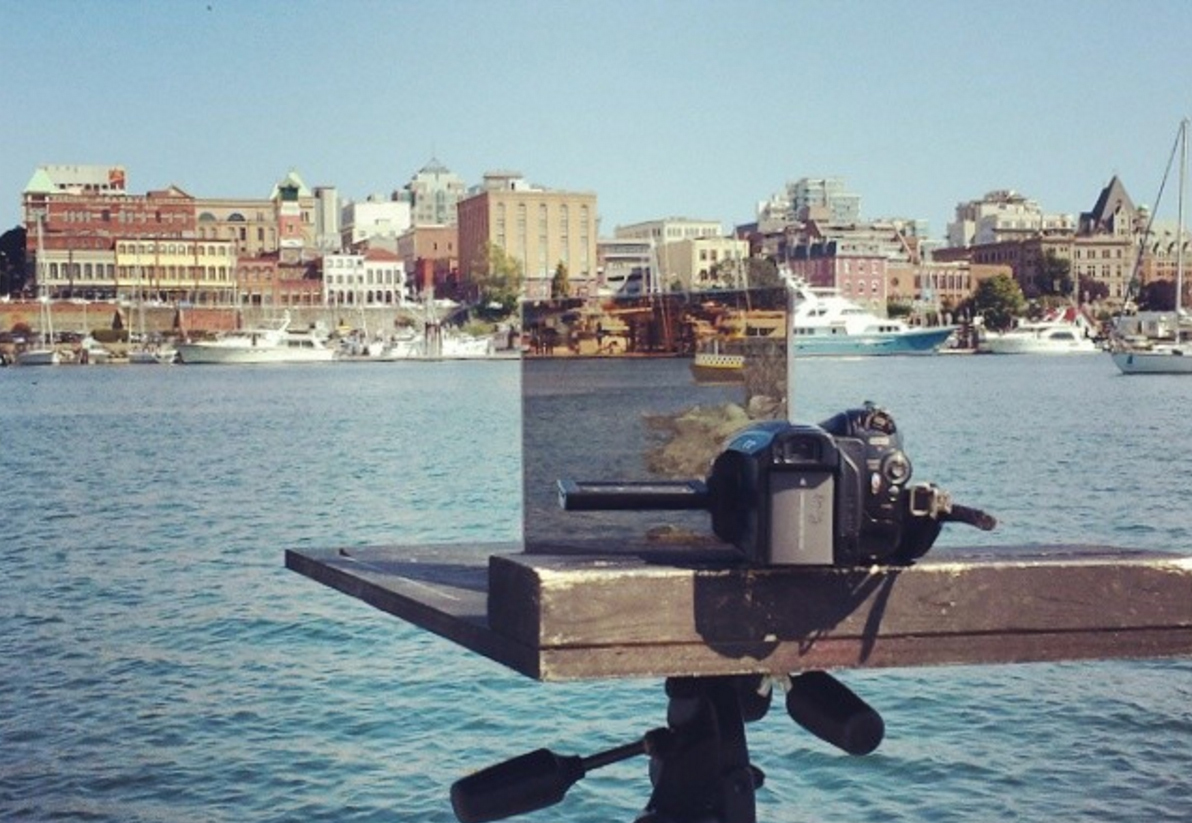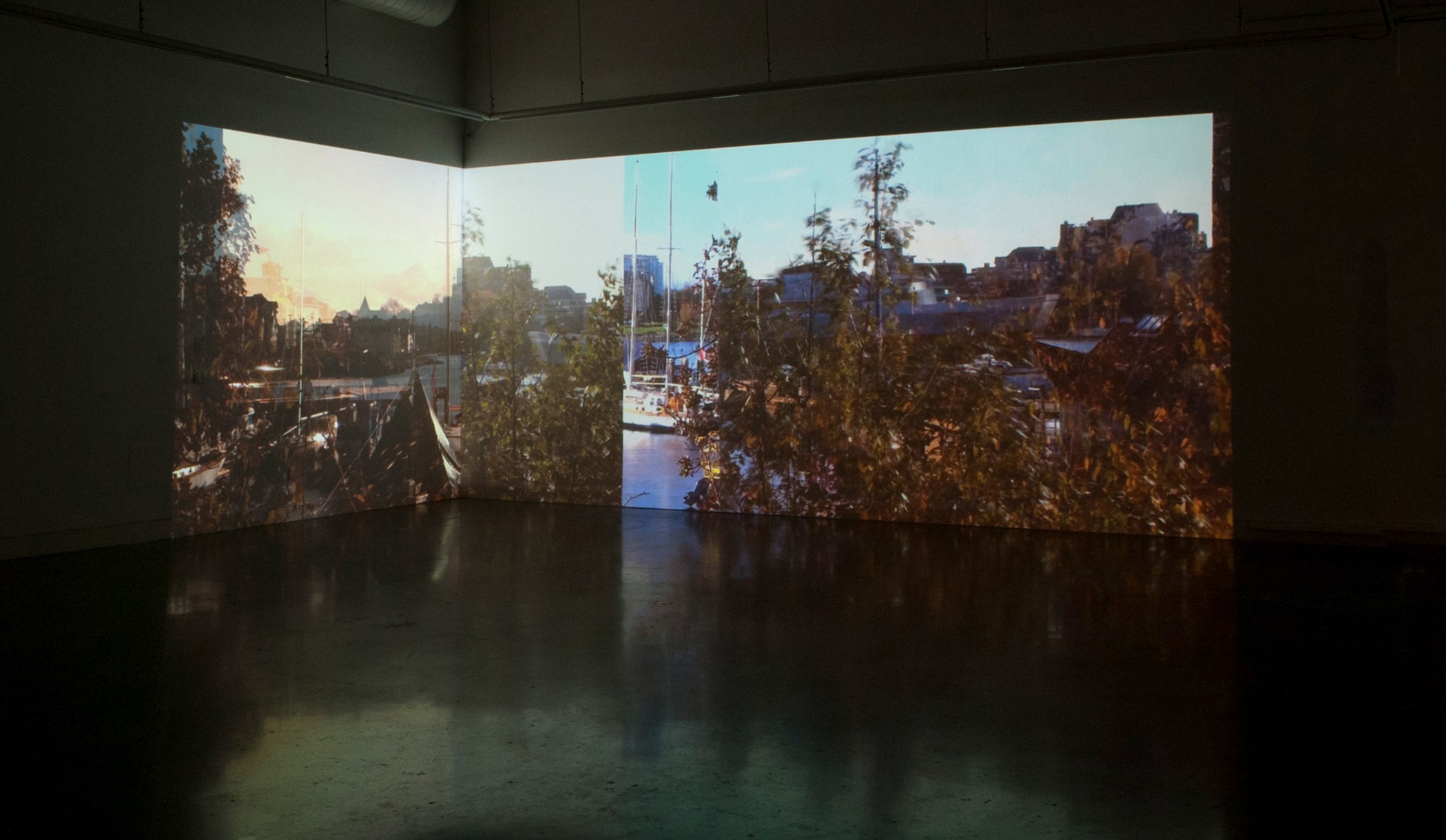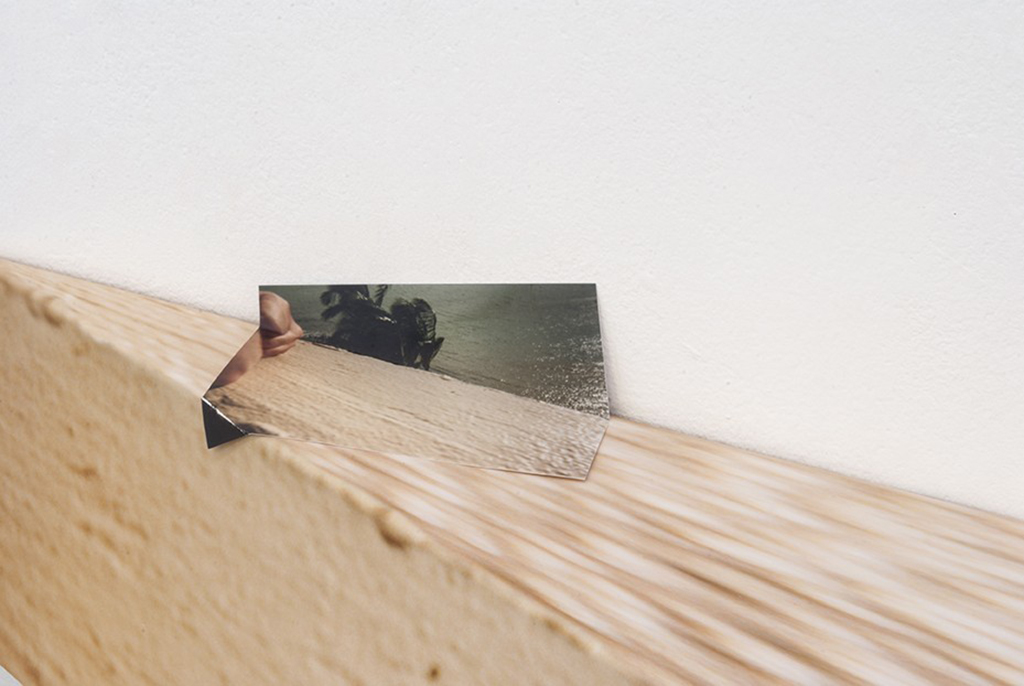Emily Geen
1 May – 30 June 2017
Emily Geen is a Canadian visual artist currently based in Victoria BC on Canada’s west coast. Originally from Lake Country, BC, Emily completed her BFA at the University of British Columbia Okanagan (2012), followed by her MFA at the University of Victoria (2015). Her work has been shown in solo and group exhibitions throughout BC & Alberta. She has recently been included in several group shows in Vancouver, including INDEX 2016 at Gallery 295 and the inaugural Lind Prize Exhibition curated by Presentation House Gallery as a part of Capture Photography Festival. In 2016 Emily attended the Banff Centre for a residency exploring notions of new materiality. In 2017 her work will be shown at Toronto’s Gallery 44 in their annual emerging artist feature, Proof 24. She currently teaches photography sessionally at the University of Victoria.
RESIDENCY PROJECT
In her art practice, she works between recorded images and materials, investigating the perceptual conditions of looking and memory, as they exist across time and space. She explores these notions with images both still and moving. Some are found images from salvaged family archives, while others are captured digitally in our present condition. The recorded images she chooses to work with comment on our human inclination to delineate and preserve lived experience. They often involve subject matter such as human or vehicle activity within the landscape, architecture and horizon lines. The subjects and their framing often suggest a desire to add structure and containment to the groundlessness of experience, but the ways in which the subjects are filtered through her artistic process results in abstraction and an affirmation of this groundlessness instead. The subjectivity of perception is facilitated.
During her residency at MOMENTUM, Emily Geen aims to further develop the methodologies of her practice, in particular for her work in video installation. She is interested in expanding the possibilities for how she navigates between the gesture of recording, the accumulation of imagery, and physical experience in her work. Some past works have subtly referred to tourism, or perhaps more specifically, the way in which the camera can facilitate engagement with new surroundings and experiences. As a newcomer to Berlin, Emily will seek to observe how her position as a foreigner influences the way she develops imagery in her work. Thematics of architecture and human activity within the urban landscape will continue to play important roles in her work to be developed while in residence. She is interested in folding architectural materiality into her installation practice, and plans to utilize custom built structures and/or unconventional surfaces into her projection sites.
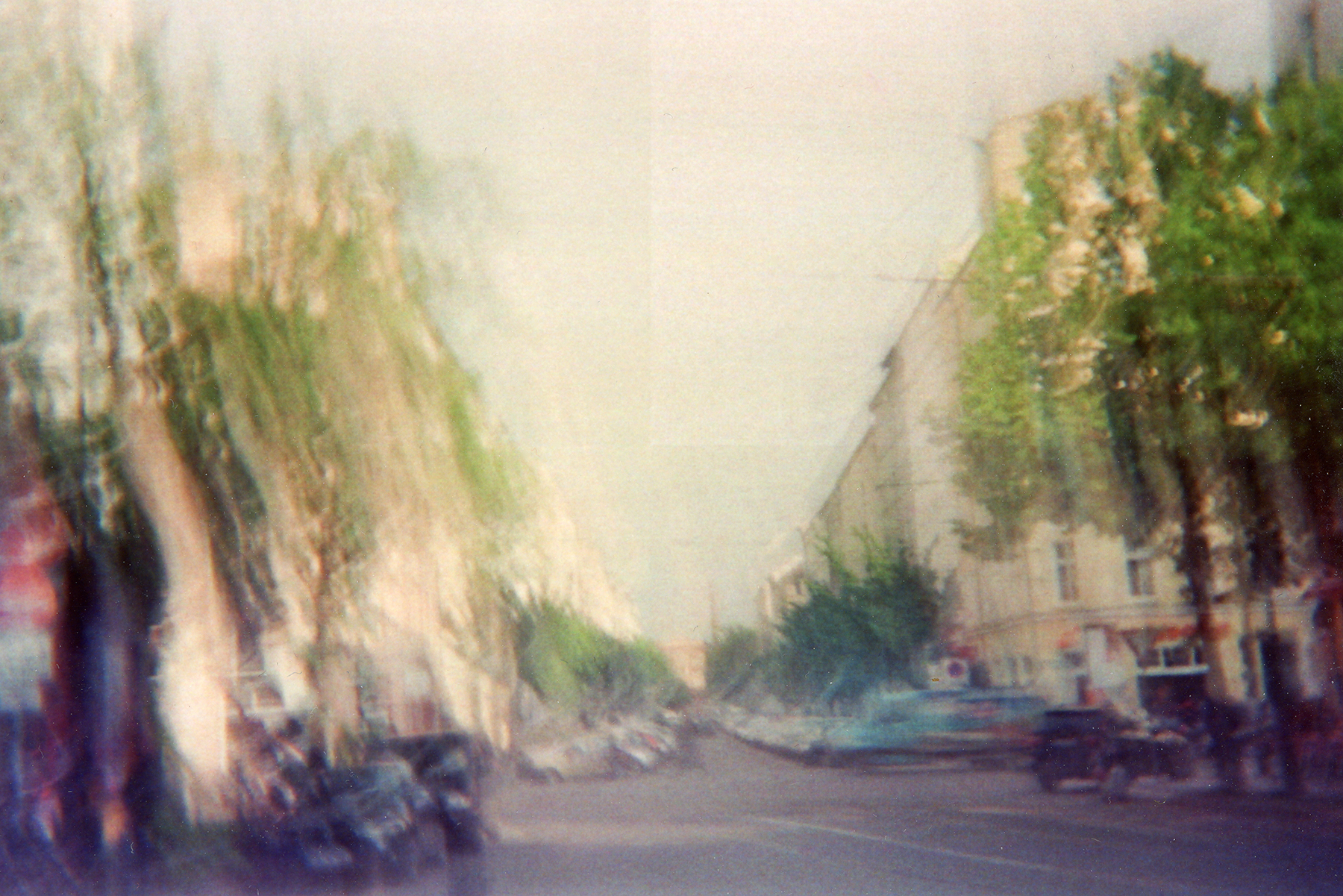
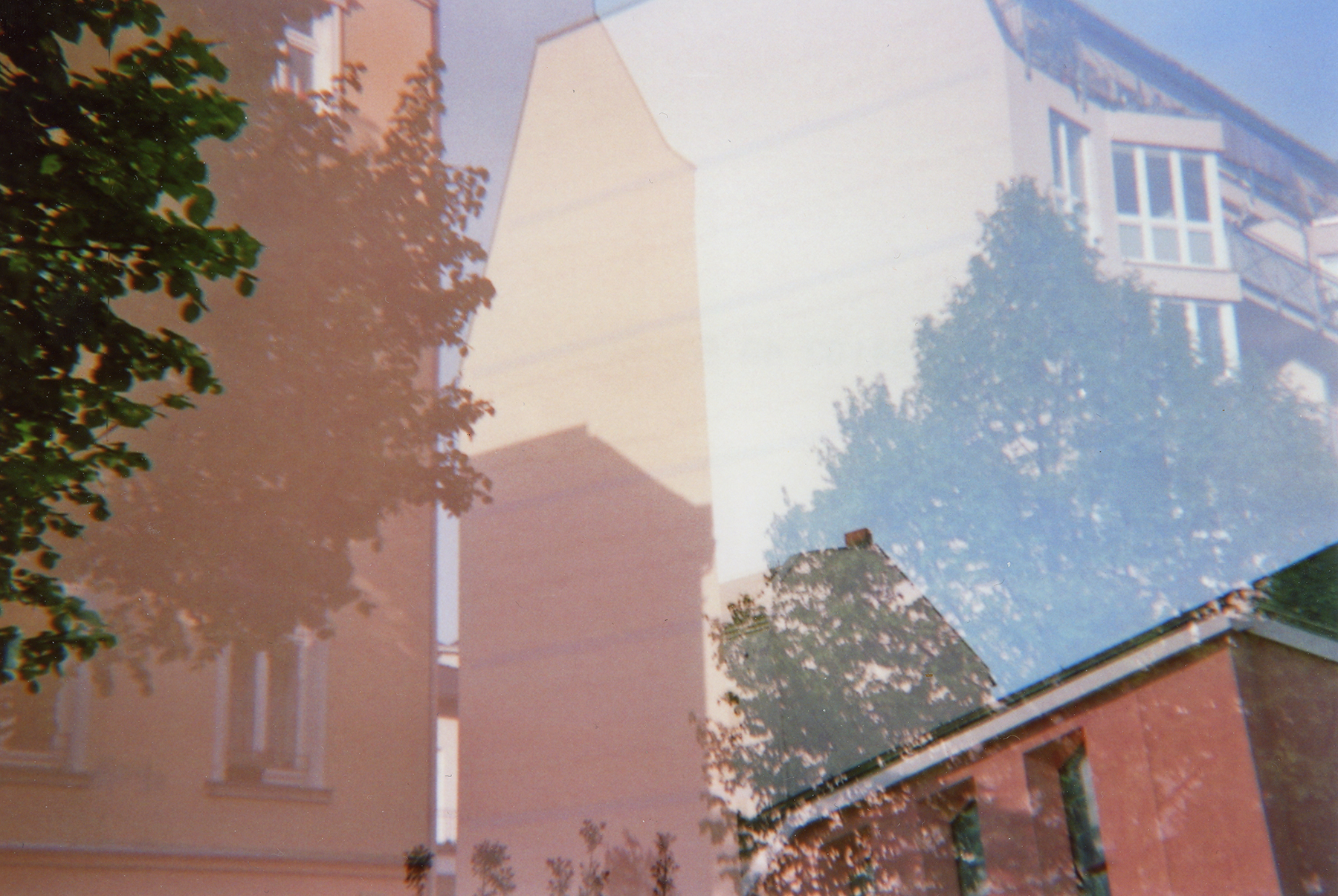
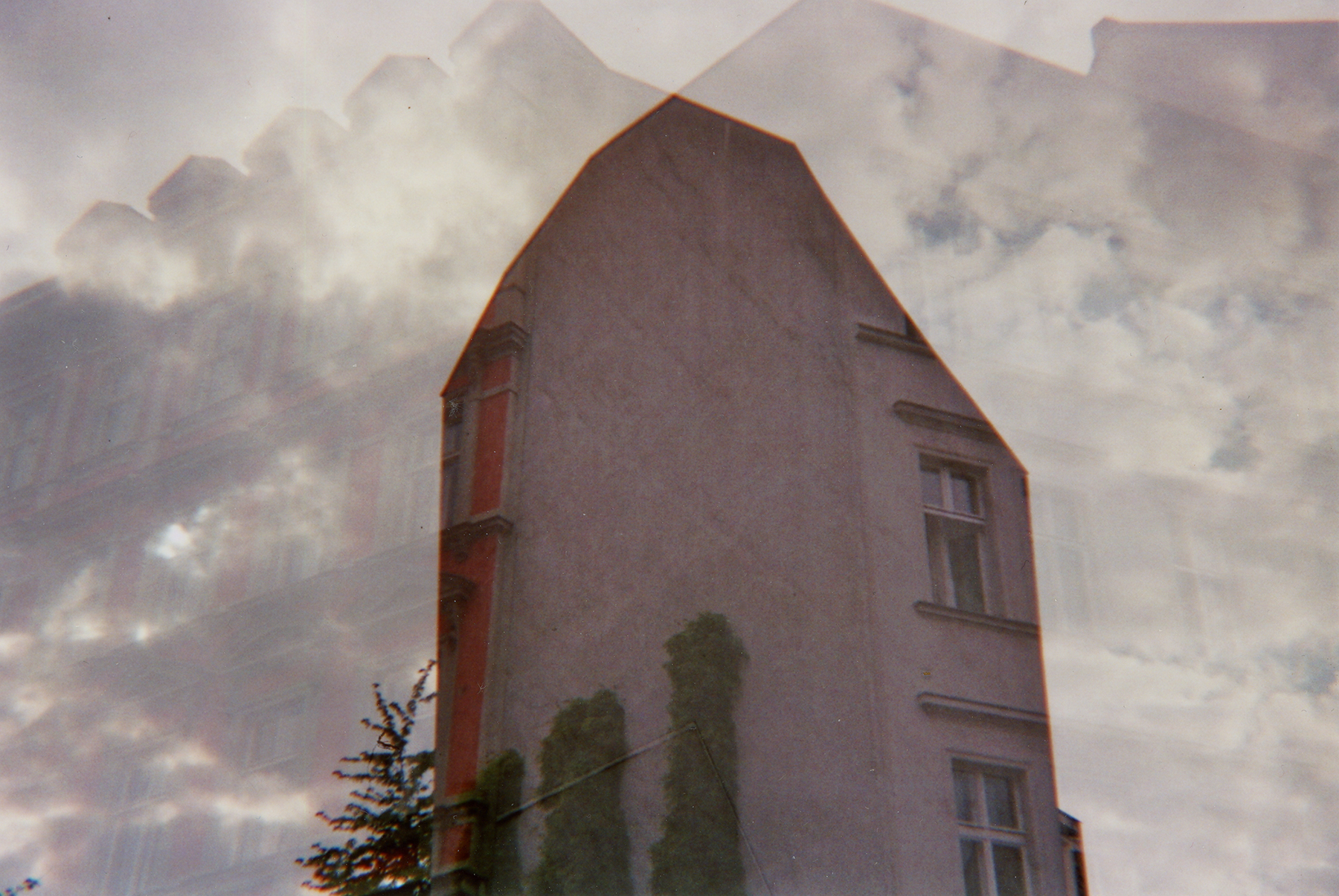
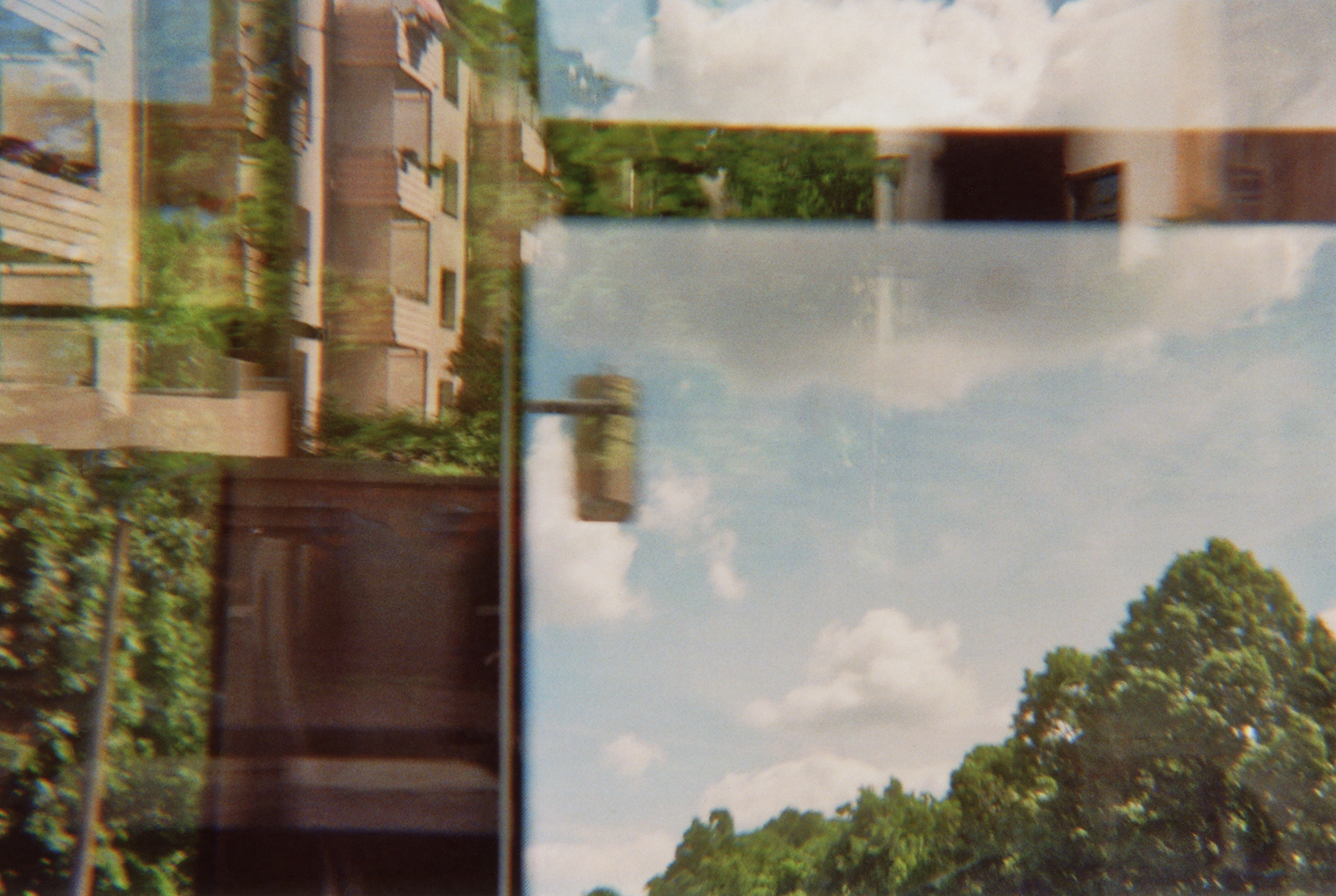
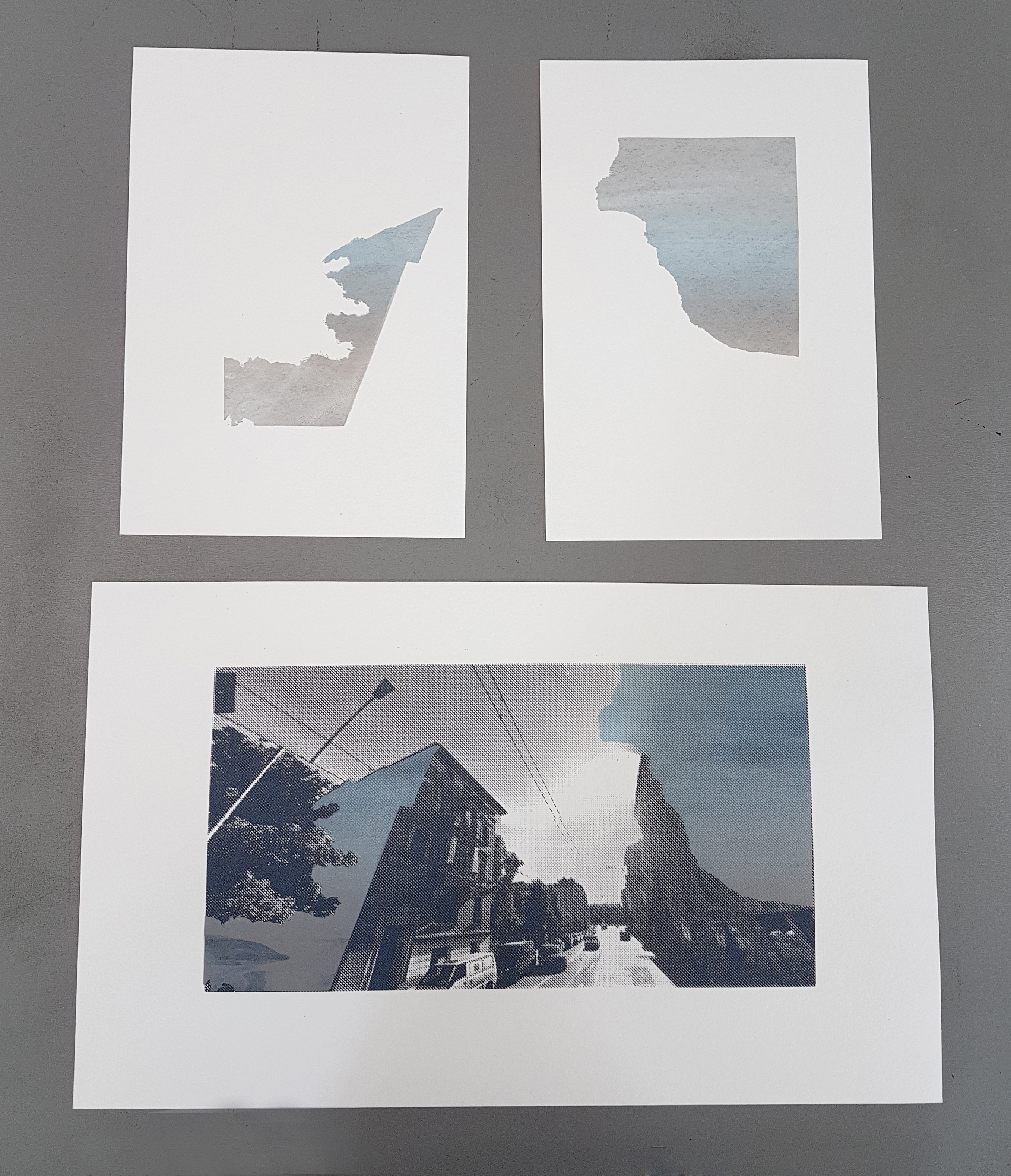
ON GOING RESEARCH AT MOMENTUM AIR
During her time in residence with MOMENTUM so far, Emily’s work has evolved in response to her encounters with the architectural history of Berlin, as well as to the character of its urban (and digital) landscape. This has taken several forms.
As intended, she began her residency by using her existing methodology of recording video through panes of semi reflective glass. This process creates a translucent, spatially contingent layering of imagery. Using her glass/camera recording device, she created a new work shot from the windows of the residency apartment. The piece consists of three channels lined up in a panoramic format. Emily uses a loose narrative structure for this piece, in which she pictures herself between tasks (opening/closing windows, working at a desk, etc). Amongst these activities are shots where the camera/glass device pans from one side of the room to the other, including views through the apartment windows and out onto the street below. At moments the narrative imagery dissolves into abstraction, as out of focus window frames and sections of wall and sky appear to become a series of moving colour fields. Parallel notions of the self, interiority, and exteriority are explored.
Alongside the development of this video work, Emily has also revisited her interest in analogue photography by shooting multiple exposure 35mm images of Berlin using a plastic toy camera. The amateur quality of the camera produces soft focus images and unpredictable results. She has been using it to photograph one of the first things she noticed upon arriving in Berlin: the towering exposed firewalls of many apartment buildings. Her interest in these was at first mainly an aesthetic one – she finds these voids of flatness amongst the otherwise richly layered urban landscape to be abrupt phenomenological pauses. However, she later learned that often these windowless walls are now visible due to bombing that occurred during WWII. Their potential as visual residue of Berlin’s volatile history is very compelling to Emily. She began using the toy camera to create multiple exposures that specifically aimed to layer two of these blank facades on top of one another, as if to draw attention to them by comparison. While the layering of firewalls remains the central strategy for exposing her rolls of film, the unpredictability of working with this camera has encouraged her to expand the scope of what she records. The series situates the firewalls amongst the broader vernacular of urban surfaces that comprise Berlin. Other motifs such as the glassy canals, windows on the S-bahn, and remaining sections of the Berlin wall have found their way into her images.
In addition to these projects, Emily has begun implementing processes new to her practice which use Google Street View as a point of departure. It surprised Emily to find that while scrolling along the streets of Berlin on this virtual platform, that many of the homes and businesses are blurred out. Google Street View automatically blurs out faces and license plates, but individuals must request any further blurring. This option was introduced in response to privacy concerns that arose when the platform was introduced in Germany in 2009. Emily is interested in drawing aesthetic and conceptual parallels between the swaths of blurry self-censorship that pepper the streets of Berlin and the blank quality of the exposed firewalls. To do to this, Emily has been using screen recordings and screen shots to highlight these relationships. Most recently, Emily created several screen prints using a Google Street View image where she isolates the forms of both an exposed firewall and a blurred out building facade, replacing them with painterly gradients.
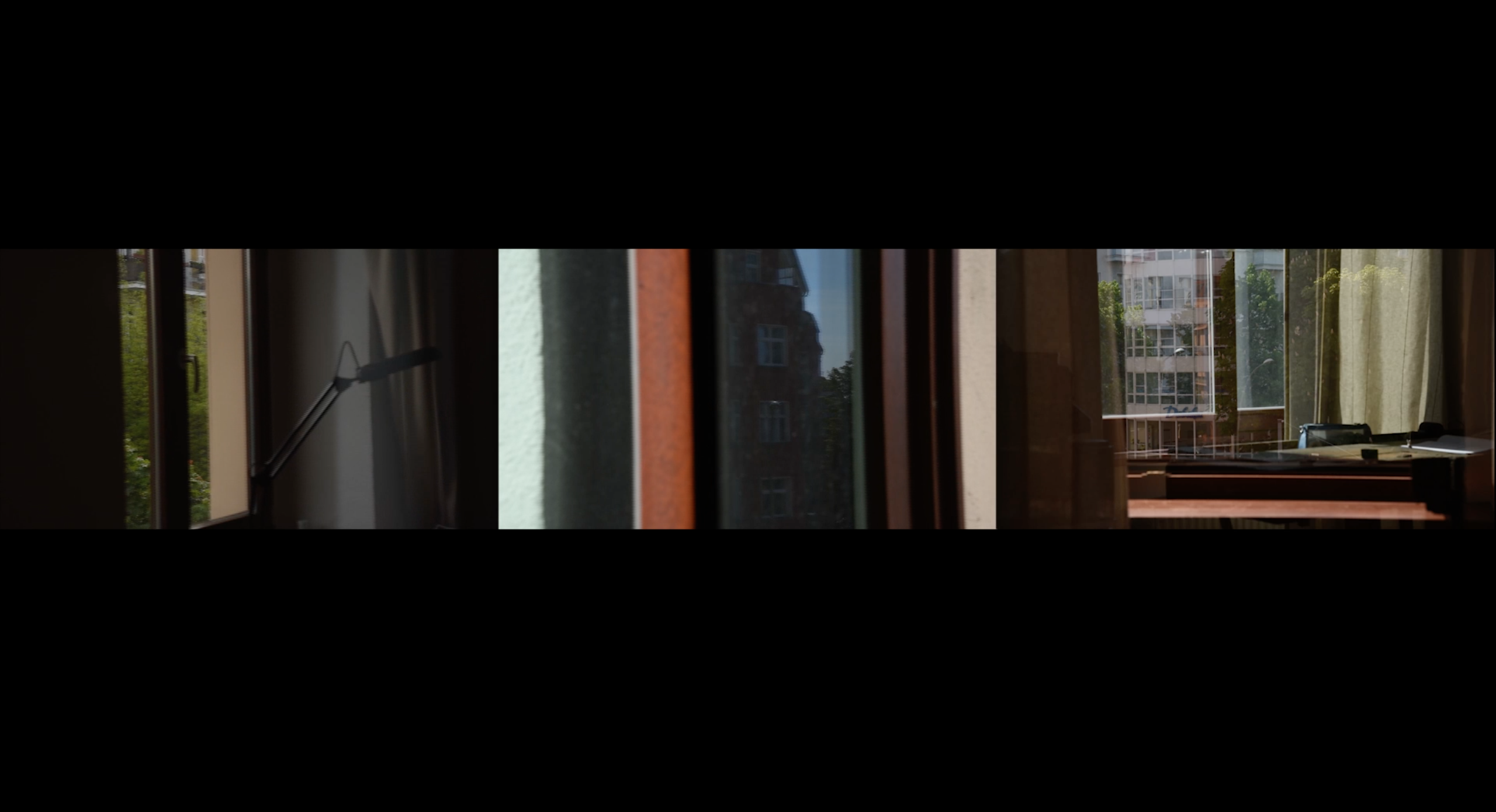
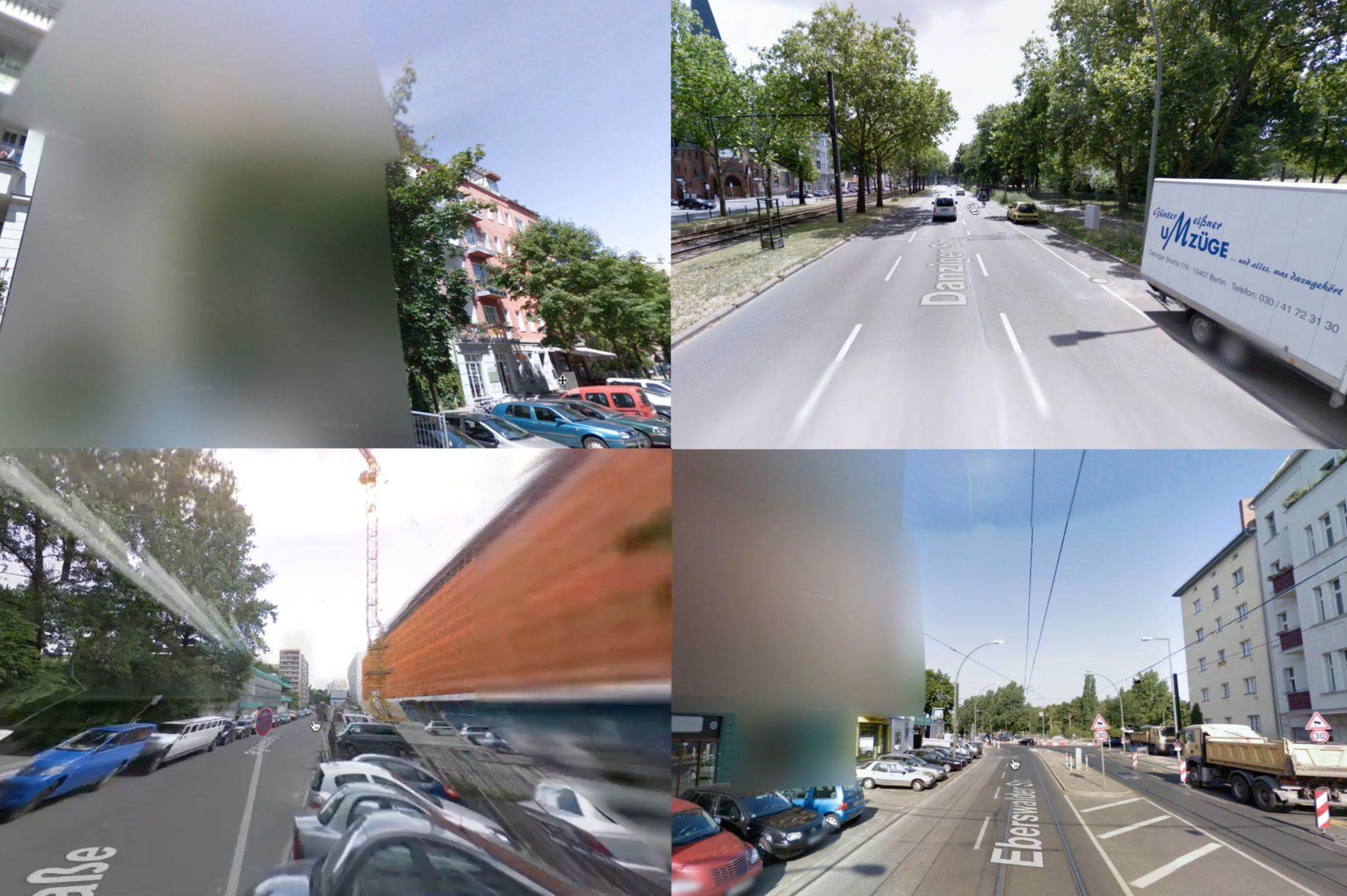
EMILY GEEN – ARTIST STATEMENT
The impulse to capture lived experience through the camera is always accompanied by the problems of framing and fixing. It becomes an effort in translating corporeally understood space, and emotionally understood events, into pictures. We want to contend with lived experience, and containing it pictorially seems like a plausible way to do this. However, reducing our perceptions to flattened photographic fragments leaves out much of what we aspire to preserve. With that said, my studio practice recognizes a certain futility inherent in the photographic, and instead seeks to decompress, regenerate and offer new perceptual relationships to pictures.
To achieve this, I work through several forms of artistic inquiry. Some of my practice involves found snapshots salvaged from recent history, while other projects use images I record in our present condition, both still and moving. My work with found family snapshots is focused on creating sculptural assemblages and installations. I purposefully work with images that appear amateur and naïve: ones that are exemplary of the photographer’s struggle to capture their experience. I then extrapolate upon the photographic gestures and subject matter found in these recorded moments by involving physical objects and materials. Within these sculptural scenarios, I find that propping, folding, pinning, reflecting, scanning, re-photographing, and re-printing are some of the ways that I am able to interact with the pictures.
In my recent projects involving video, I have made durational recordings of the landscape by means of a self-invented recording device. This device consists of a video camera and a pane of semi-reflective glass erected upon a wooden platform that is supported by a tripod. The tinting of the glass is about 50% reflective, allowing the camera to see through the glass, but also receive a reflection of anything adjacent. This results in a simultaneous superimposition of the surroundings on each side of the glass. The angle of the camera in relation to the glass determines the scope of view. I have experimented with duplicating the set up to involve two cameras, each recording through their own piece of glass simultaneously, as well as allowing the camera to see past the edge of the glass, creating vertical delineations in the resulting recordings. The videos are often presented on an immersive scale, and seem to oscillate between recognition and abstraction.
Both bodies of work tend to involve subject matter that highlights notions of spatial delineation and containment, such as roadways, doorways, balconies, yards, and horizon lines. My aesthetic responses to these subjects often include strategies layering and stacking that acknowledge the reality of the image as a surface, drawing attention to textures and edges. These choices in content and form comment on the human inclination to add structure and containment to the groundlessness of experience. Yet, the abstraction inherent in the resulting works affirms this groundlessness instead. The viewer is presented with familiar things tinted with beauty and nostalgia, but their familiarity is rearranged in such a way that we are asked to reconsider the nature of the image, and the role of the picture. The subjectivity of perception is facilitated as viewers navigate their own memories and associations against the phenomenological and unfamiliar presence of the work itself.
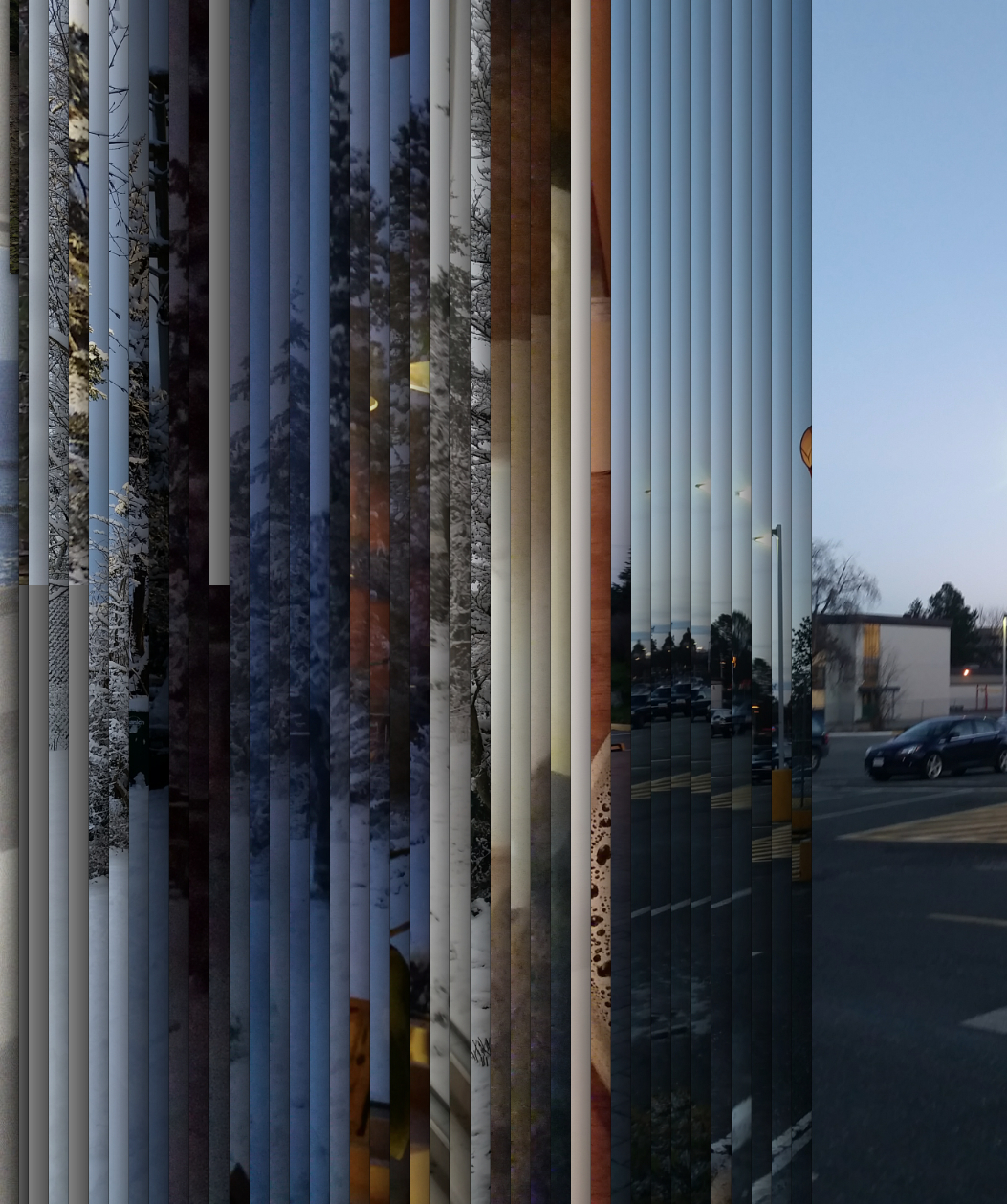
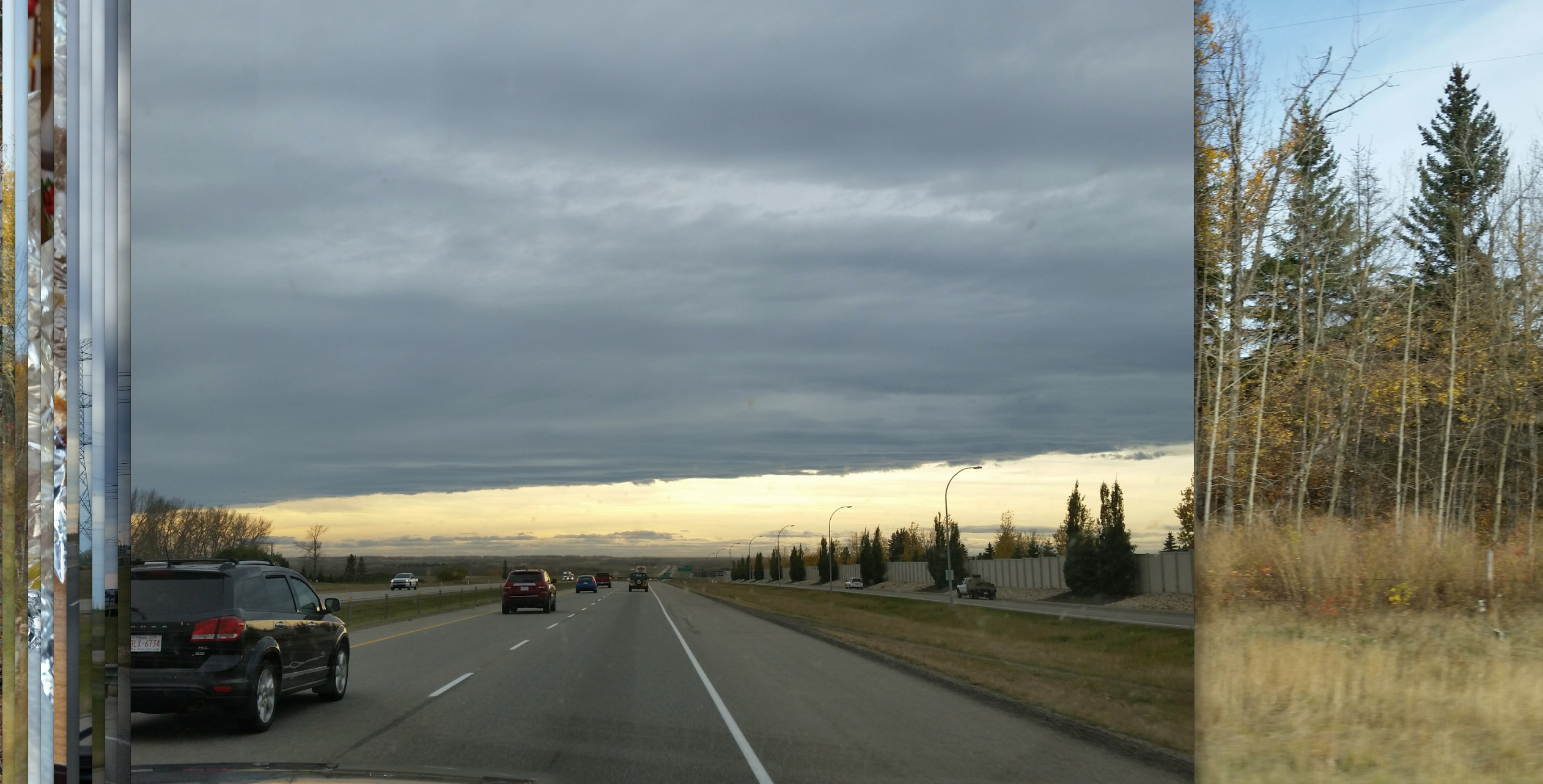
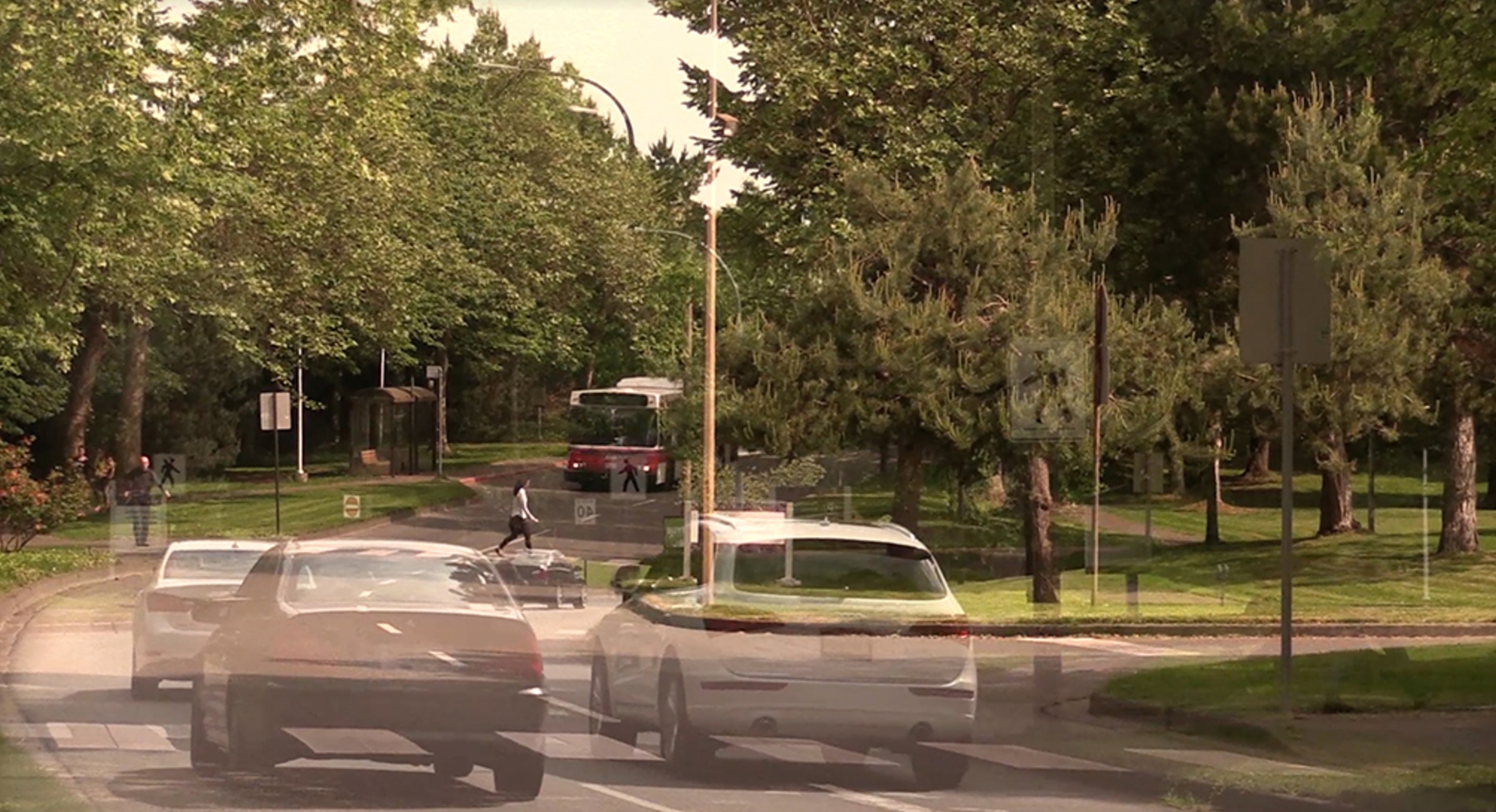
With thanks to the generous support of:


 Back to Index
Back to Index